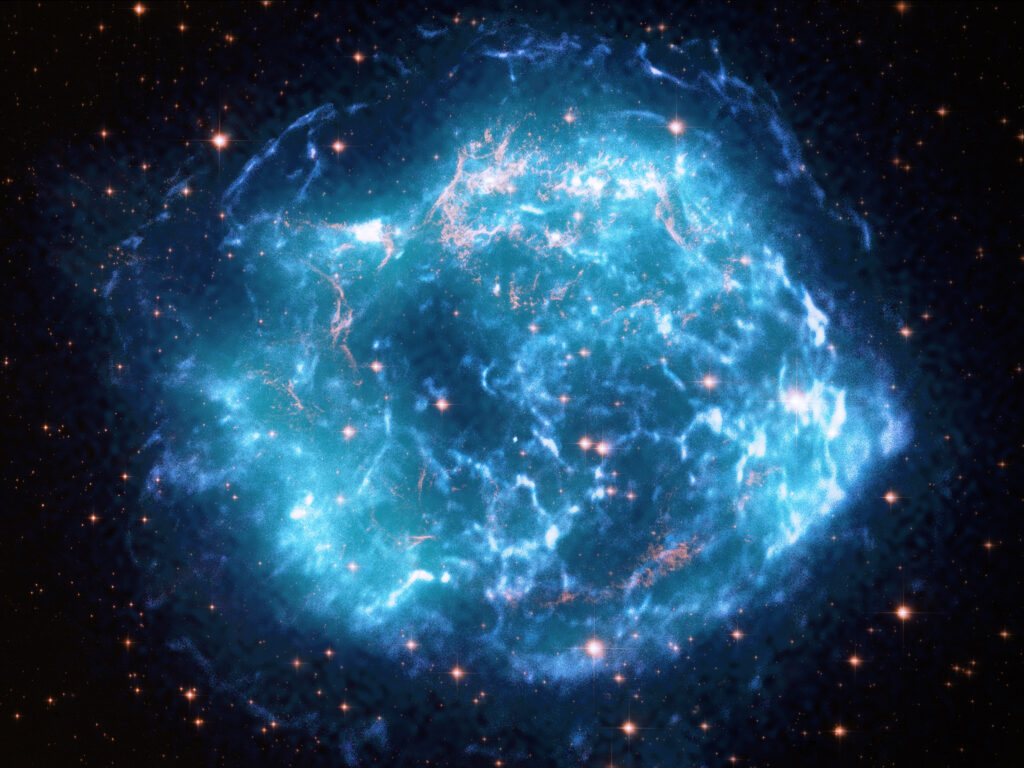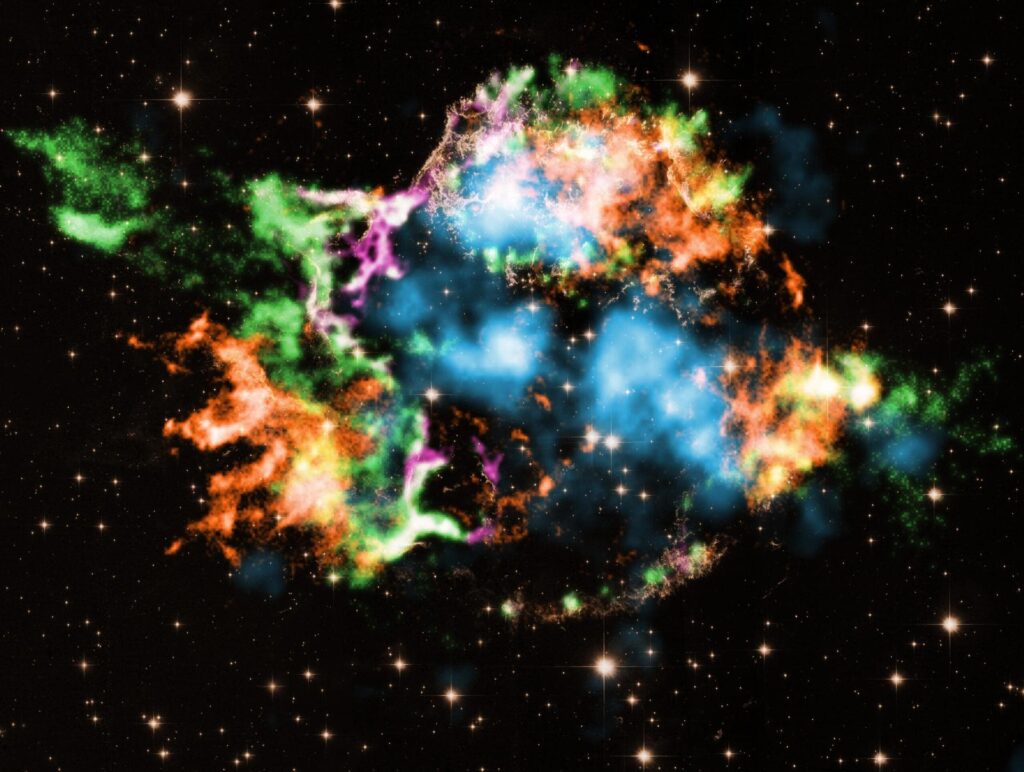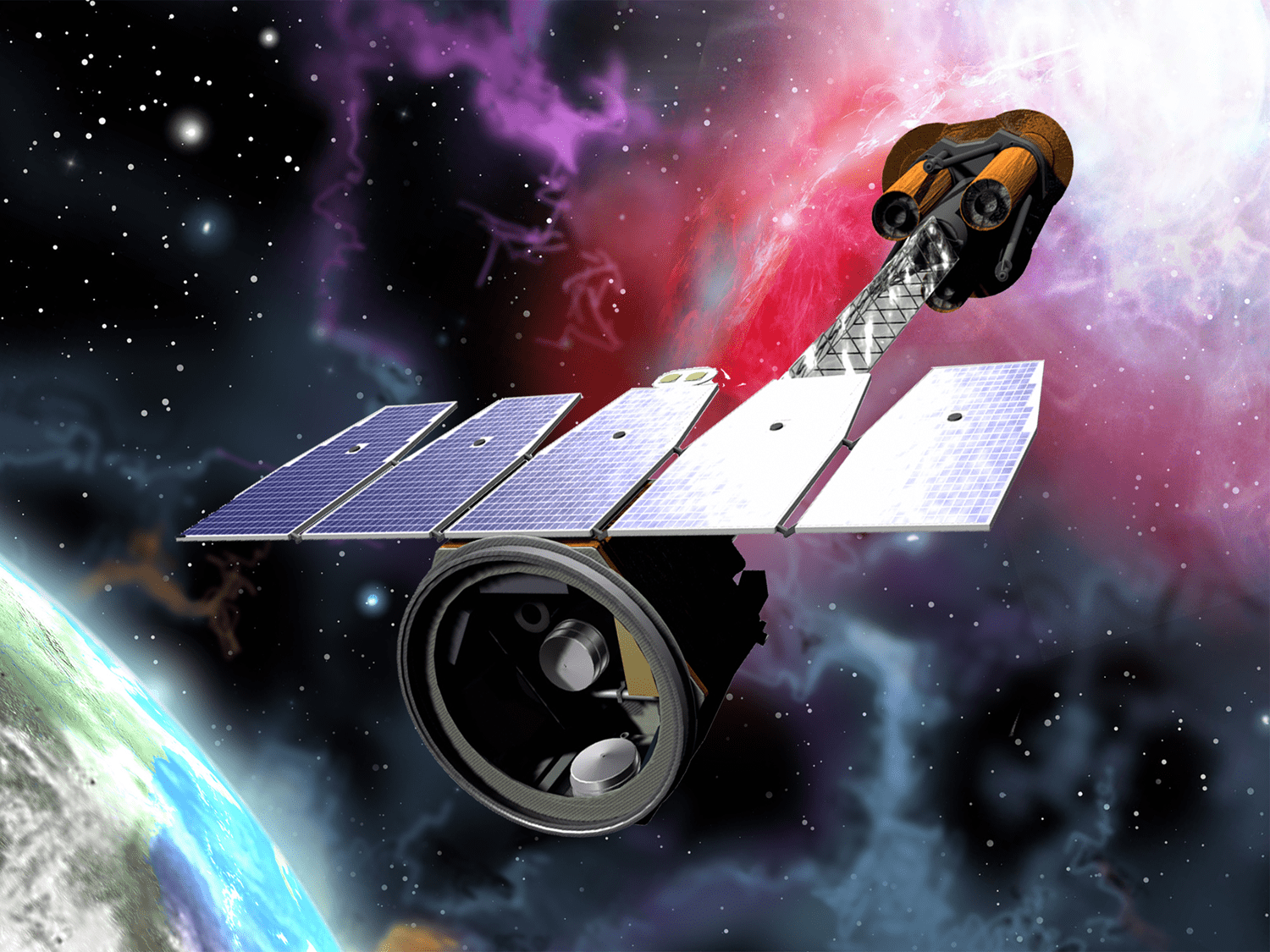NASA has published a new, very impressive image of the supernova remnant Cassiopeia A. It was compiled on the basis of data collected by the IXPE, Chandra and Hubble space observatories.

The “missing” supernova
Cassiopeia A is located at a distance of 11 thousand light-years from Earth and represents one of the youngest supernova remnants in the Milky Way. It is believed that the light from its flash should have reached our planet sometime at the end of the XVII century. However, there is no record of this event in the historical chronicles. There is an assumption that shortly before the explosion, the star ejected a large amount of matter. It enveloped it tightly and absorbed the light from the flash.

It was only in 1947 that astronomers discovered a powerful radio source in the constellation Cassiopeia, which was later correlated with a supernova remnant. Subsequently, it was possible to identify it in the optical range. Observations have shown that the substance of the residue has a temperature of about 30 million degrees and expands at a speed of 4-6 thousand km/s.
First observations of the IXPE telescope
Due to its proximity to the Earth and its youth, Cassiopeia A is the object of close study by many astronomers and astrophysicists. In particular, they are interested in the processes of formation of heavy elements. Supernovae are often called stellar forges. During the process of explosive nucleosynthesis, all chemical elements are formed in them — from carbon to iron.

Cassiopeia A was chosen as the first target for observations of the IXPE X-ray telescope launched at the end of last year. In the period from January 11 to January 29, 2022, it conducted a series of observations of the supernova remnant. Thanks to its ability to detect polarized radiation, IXPE has provided new data on the structure of the magnetic field of Cassiopeia A. It turned out that its lines are aligned in a radial, not perpendicular direction.
Subsequently, the IXPE data were supplemented with the results of observations of the Chandra and Hubble telescopes. This made it possible to create a new portrait of the deceased star.
According to https://www.nasa.gov
Follow us on Twitter to get the most interesting space news in time
https://twitter.com/ust_magazine

